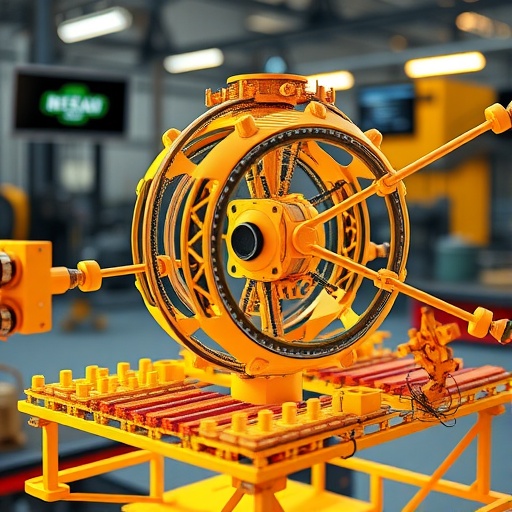The recent advancements in generative artificial intelligence (AI) are ushering in groundbreaking changes across various industries, particularly in processes, design, and production. This innovative technology has shown immense potential to revolutionize traditional methodologies, creating opportunities for efficiency, creativity, and improved outcomes. In this landscape, industries are evolving rapidly, adopting generative AI to streamline operations and achieve higher levels of productivity and quality. The implications are vast, covering everything from product design to manufacturing and beyond.
Generative AI represents a paradigm shift, as it mimics the way humans create by processing vast amounts of data to generate new ideas. Unlike traditional AI that follows predefined rules, generative AI can produce content that has never existed before. This capability enables engineers, designers, and manufacturers to explore a broader range of possibilities in their work. For instance, in product design, generative AI can analyze existing products and create variations that adhere to certain parameters, thereby enhancing innovation and reducing the time spent on conceptualization.
One of the most significant impacts of generative AI is on the designing phase of new products. Earlier, designers would have to rely solely on their expertise and creativity, but now, they can leverage AI tools to facilitate the process. This synthesis of human creativity and machine intelligence leads to the creation of unique designs that are both aesthetically pleasing and functionally viable. As these tools continue to develop, the collaboration between humans and machines is expected to lead to an explosion of creativity that was previously unimaginable.
In manufacturing, generative AI is gaining traction by optimizing production processes. By analyzing data from the shop floor, AI algorithms can identify inefficiencies and suggest improvements. This data-driven approach allows manufacturers to maximize resources, reduce waste, and increase overall productivity. For example, generative algorithms can design custom manufacturing processes tailored to specific product requirements, ensuring that every step in the production chain is optimized, which ultimately leads to cost savings and enhanced product quality.
Furthermore, the implementation of generative AI in industries is transforming supply chain management. The capability of machine learning to predict demand patterns and optimize inventory levels results in a more fluid and responsive supply chain. By using generative models, companies can simulate various scenarios, assess risks, and make informed decisions that enhance supply chain resilience—an increasingly critical factor in today’s global market.
The potential for generative AI extends into the realm of marketing and customer engagement as well. Businesses can use generative AI to create personalized content that resonates with consumers on a deeper level. Tailoring advertisements, crafting unique user experiences, and generating recommendations based on individual customer behavior are just a few examples of how this technology is being harnessed. The ability to connect with customers through personalized communication not only fosters brand loyalty but also drives sales in competitive markets.
Education and training in industries are also experiencing a transformation due to generative AI. By simulating real-world scenarios through augmented and virtual realities built upon generative AI, companies can provide immersive training experiences for their employees. These tools help workers acquire hands-on experience and enhance their skills in a safe environment, ultimately leading to a more skilled workforce. This adaptation is particularly crucial as industries face rapid technological changes requiring newly acquired expertise and adaptability.
Despite the significant advantages of generative AI, there are challenges that industries must navigate. Ethical considerations are paramount, particularly in concerns regarding intellectual property, data privacy, and algorithm bias. Organizations adopting generative AI must implement policies that safeguard consumer data and ensure compliance with regulations. Moreover, discussions on the ethical implications surrounding AI-generated content must become a dialogue within companies to gauge potential risks and establish best practices.
The role of human oversight remains critical even as generative AI becomes more prevalent. The technology serves as an augmentation of human capabilities rather than a replacement. Human creativity is essential in interpreting AI-generated outputs, making decisions, and providing insights based on qualitative factors that machines may overlook. Recognizing the symbiotic relationship that can be cultivated between humans and AI will play a vital role in shaping future advancements.
Moreover, the pace of generative AI development is accelerating rapidly. This swift progression poses both opportunities and challenges for organizations. Companies that are quick to adapt will undoubtedly gain a competitive edge, but the risk of being left behind looms for those who hesitate. Continued investments in research and development, alongside a commitment to innovation, can pave the way for industries to thrive in an era increasingly driven by artificial intelligence.
In conclusion, as generative AI continues to redefine boundaries in industrial applications, it promises a future filled with possibilities. The blend of creativity, efficiency, and customization offered by this technology presents transformative potential for processes, design, and production that can lead to exponential growth across sectors. With a careful approach to integration, oversight, and ethical considerations, the industrial landscape can harness the full power of generative AI to foster growth and innovation.
As this technological revolution unfolds, it is crucial for stakeholders at all levels to remain engaged in discussions about its implications and opportunities. Continued collaboration between industry leaders, technologists, and policy-makers will ensure that the benefits of generative AI are realized responsibly and inclusively. The journey has just begun, and the next steps could reshape the very fabric of how industries operate on a global scale.
The future that generative AI is carving out is bright and full of promise, marking the beginning of a new era in industrial innovation that emphasizes the partnership between human intelligence and machine learning. The implications of these advancements are far-reaching, with the potential to impact economies, societies, and the way we interact with technology every day.
Subject of Research:
Article Title:
Article References:
Valencia-Arias, A., Rodríguez-Correa, P.A., Jimenez-Garcia, J.A. et al. Industrial applications of generative artificial intelligence: transformations in processes, design, and production. Discov Artif Intell 5, 327 (2025). https://doi.org/10.1007/s44163-025-00557-6
Image Credits: AI Generated
DOI: https://doi.org/10.1007/s44163-025-00557-6
Keywords:




